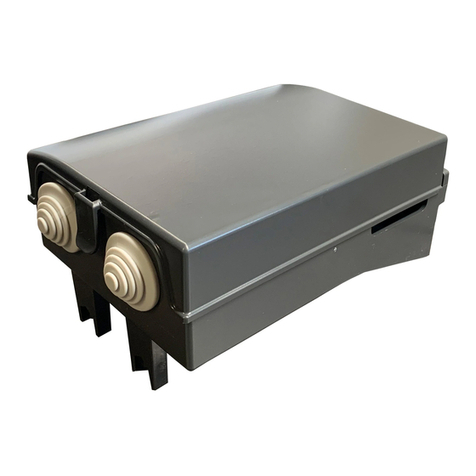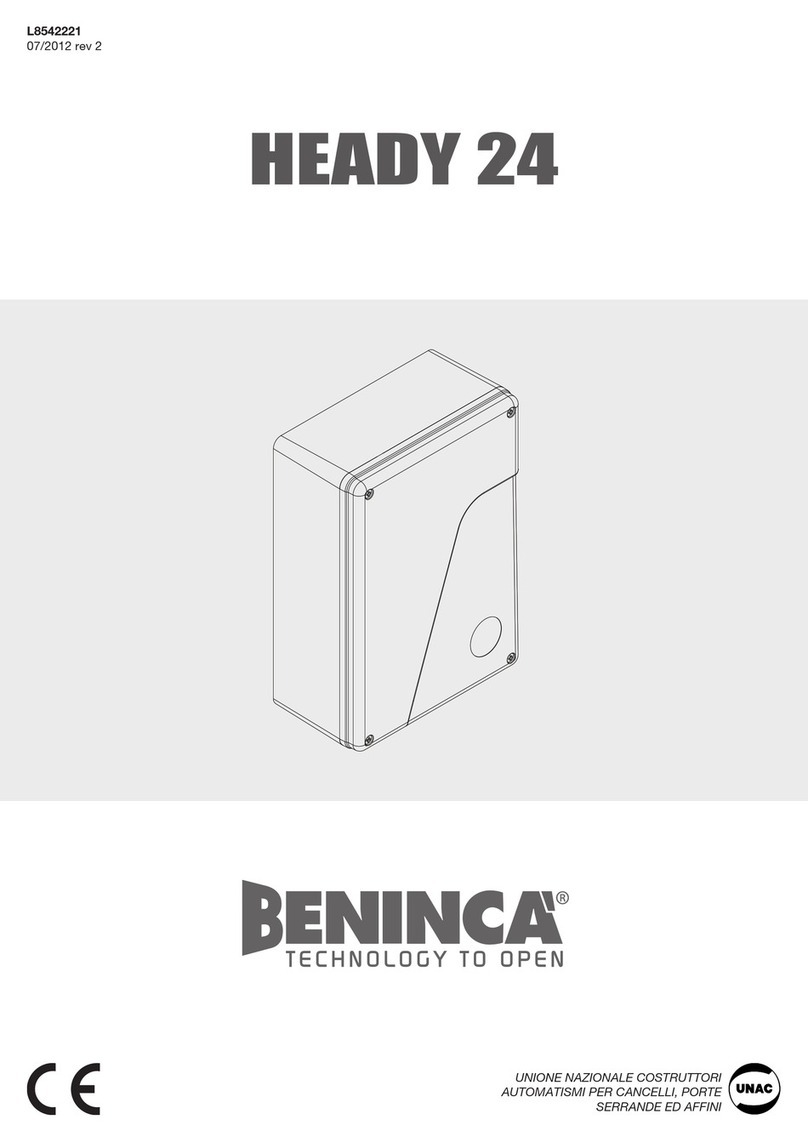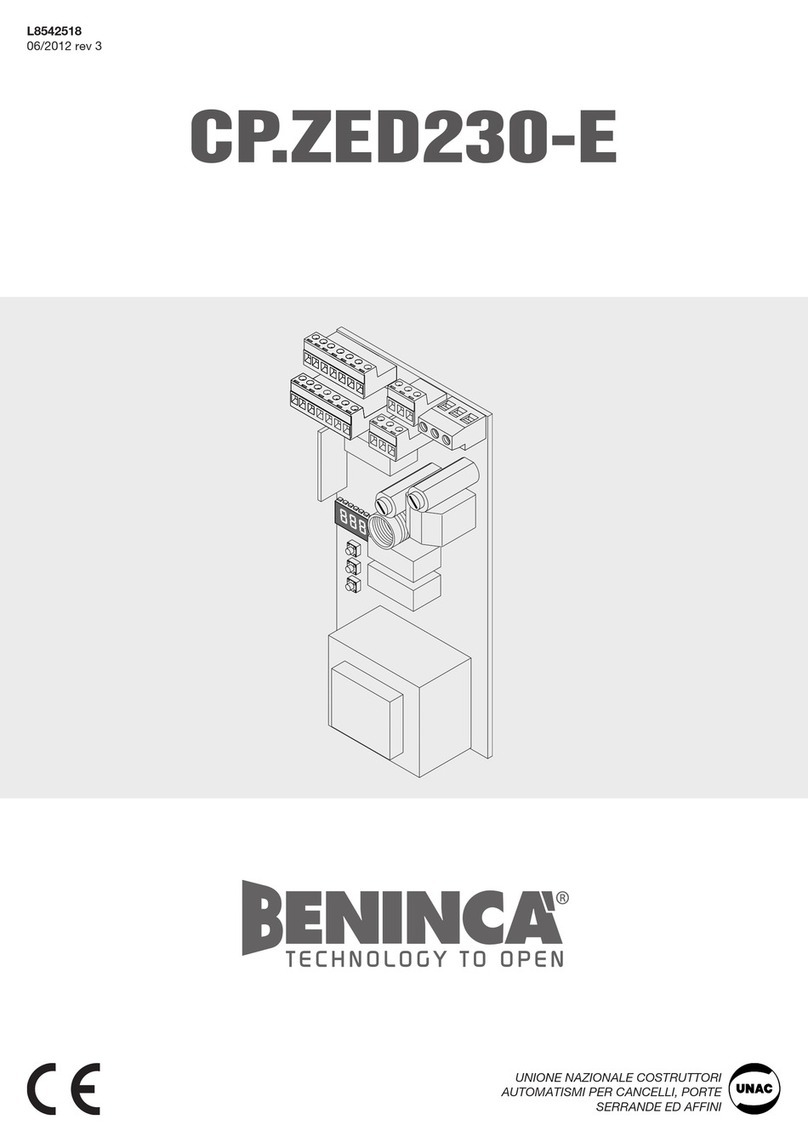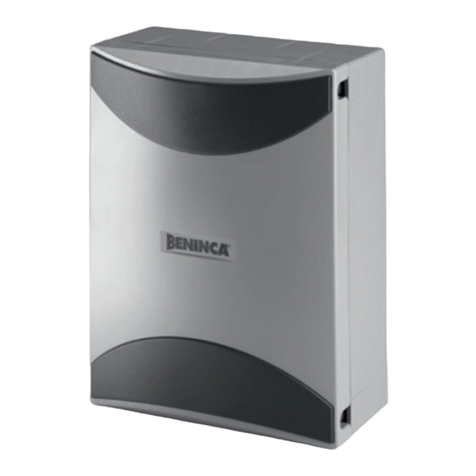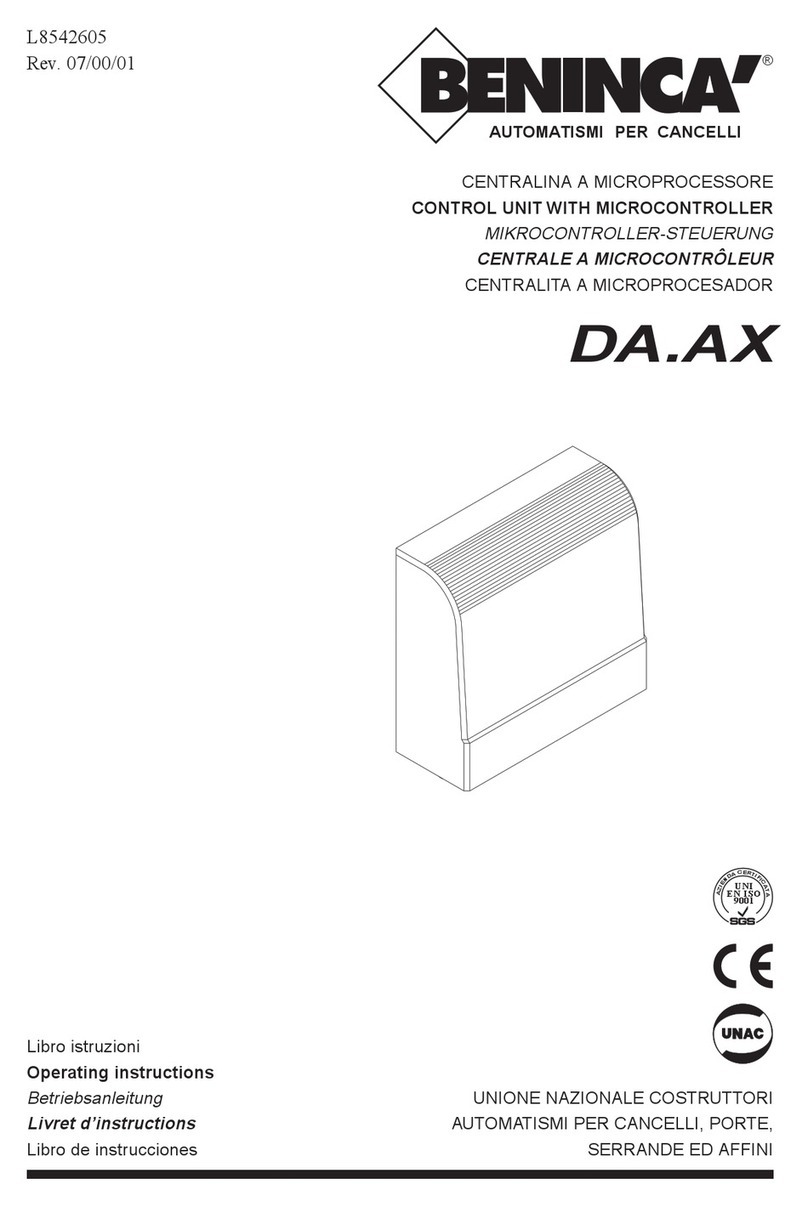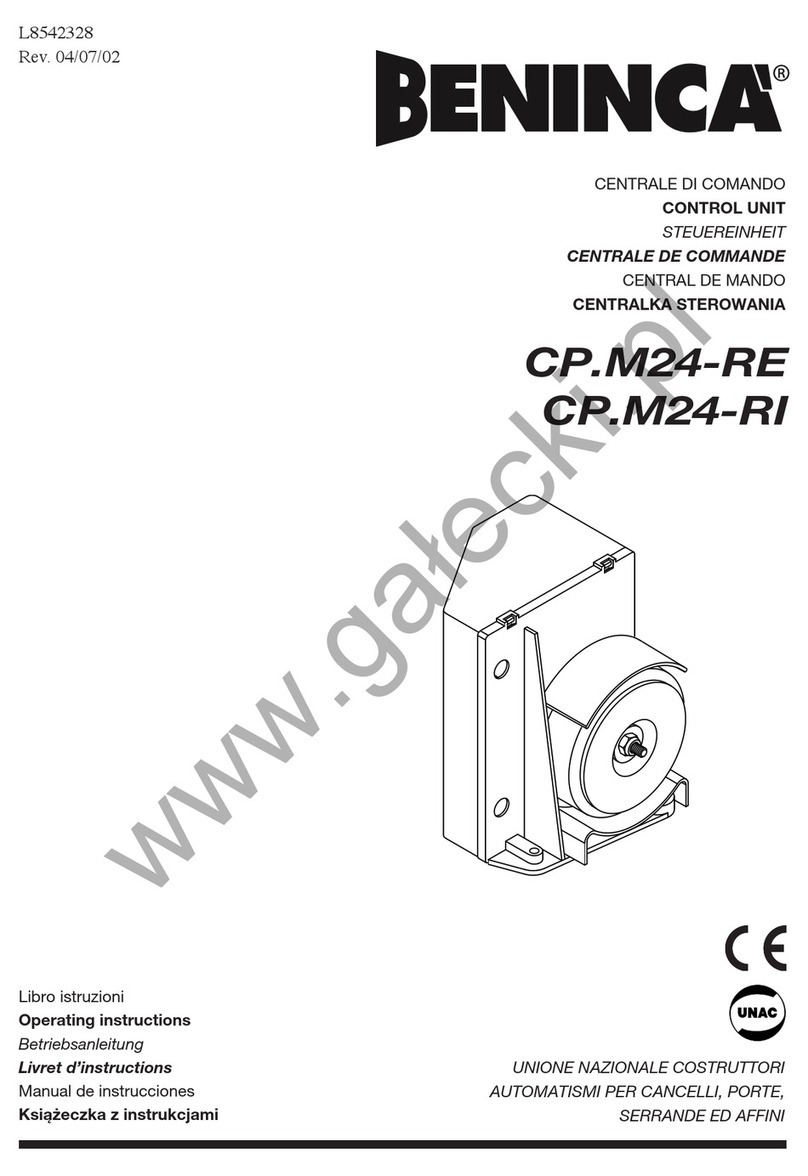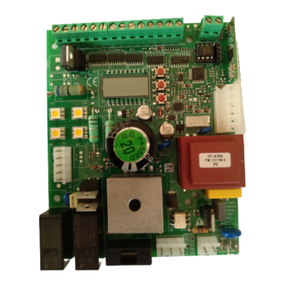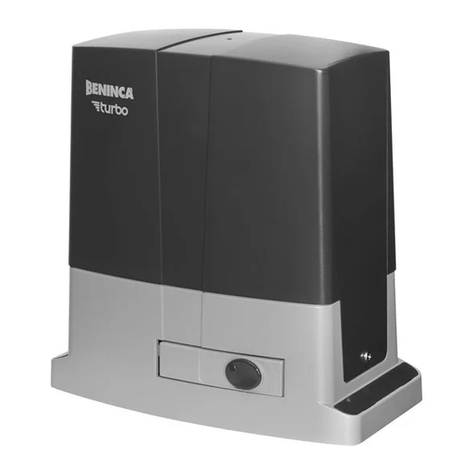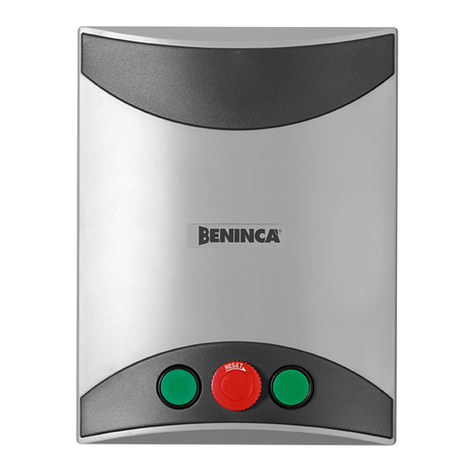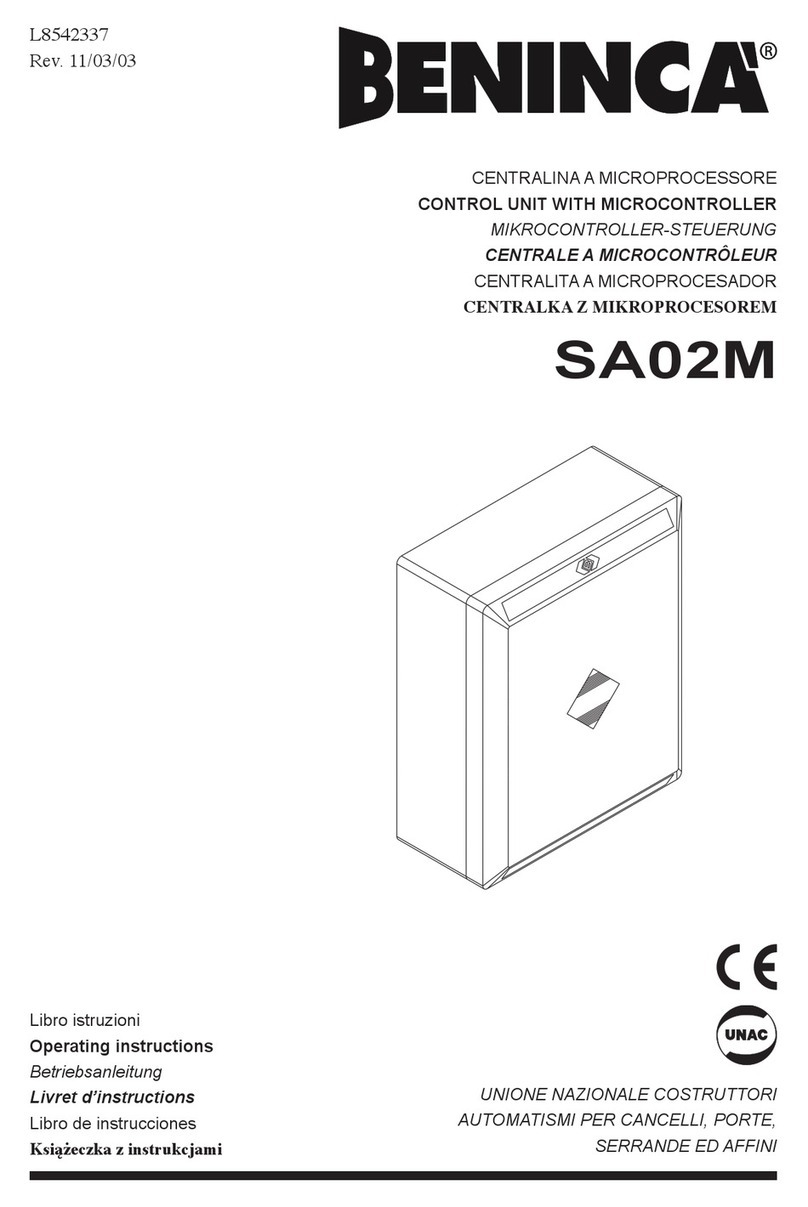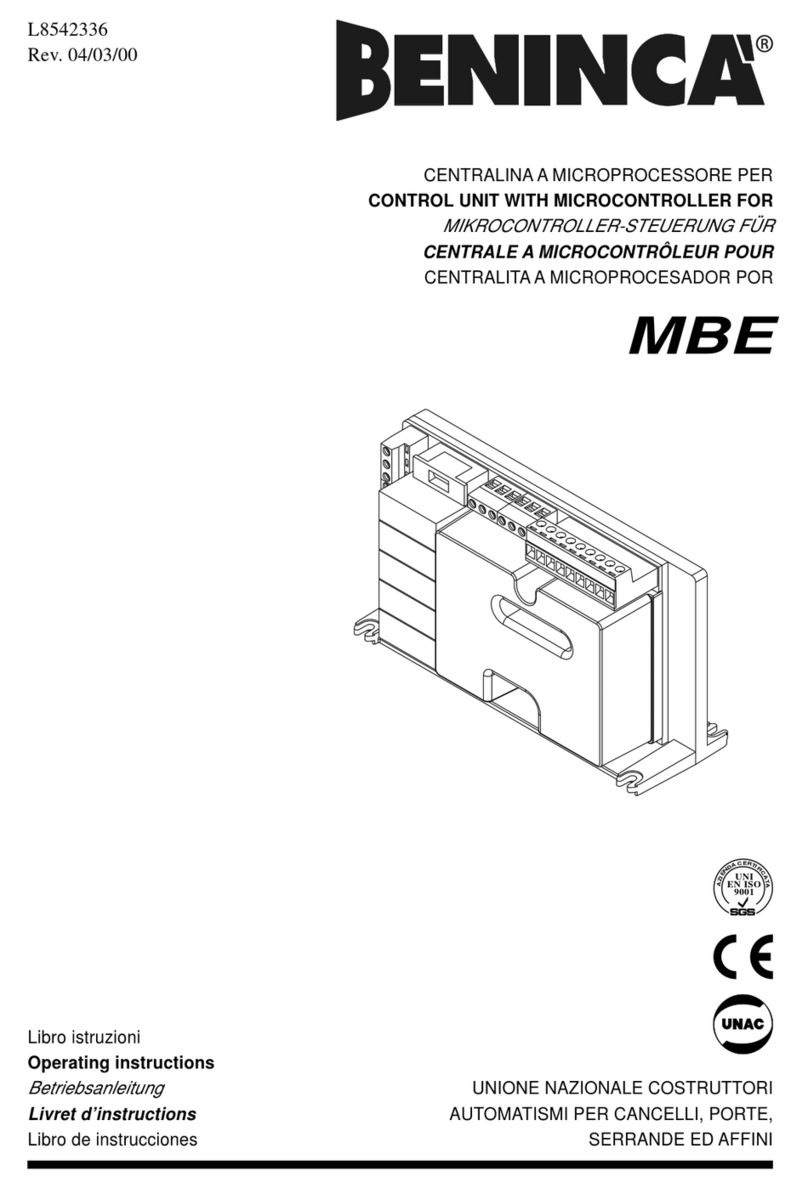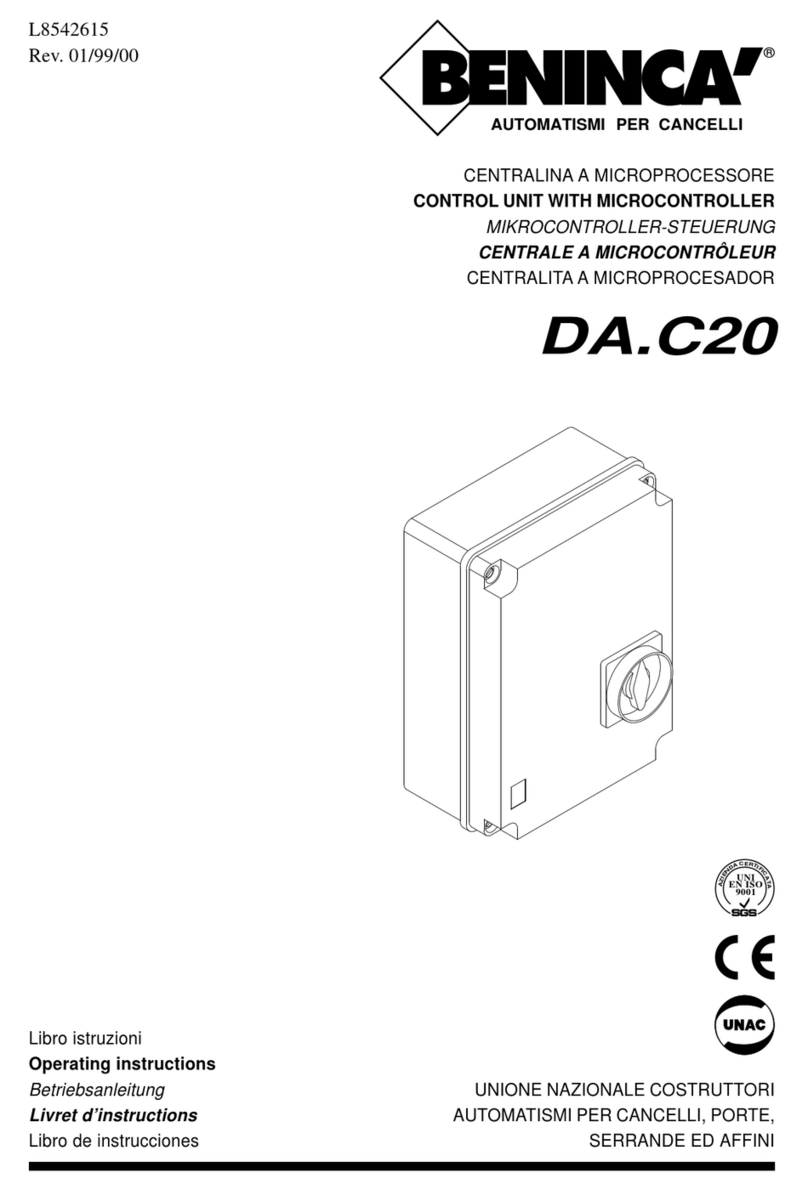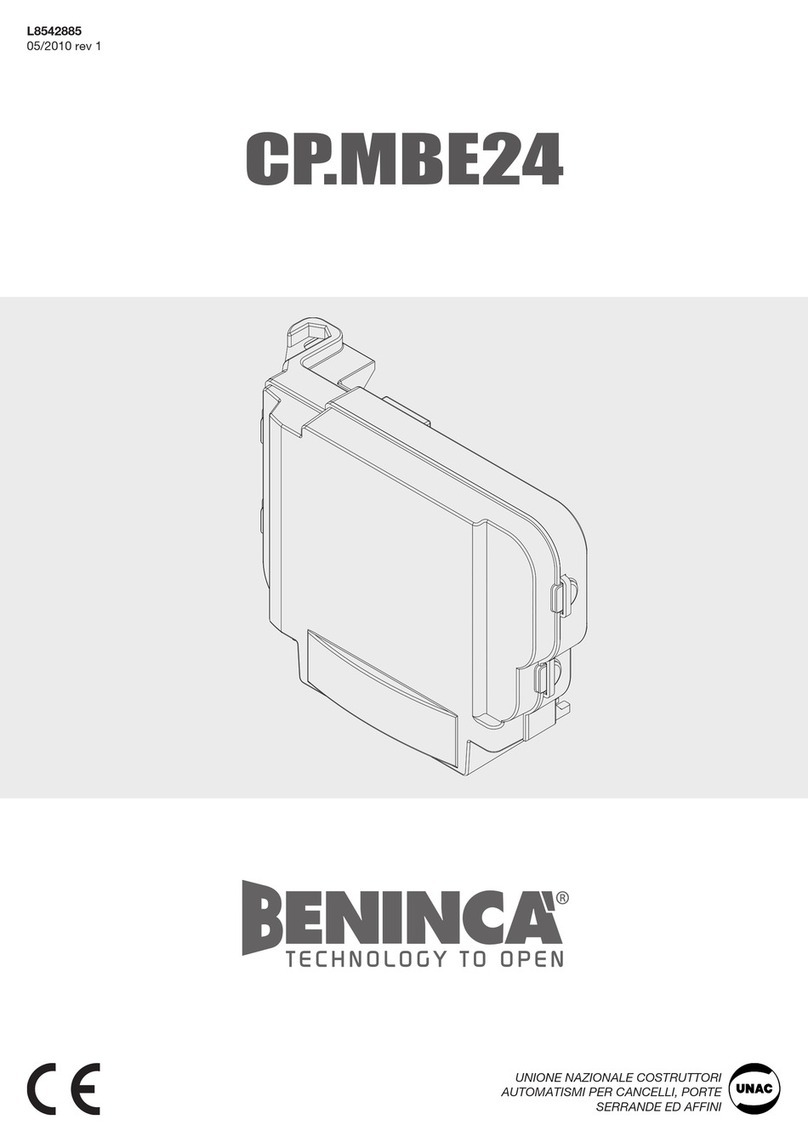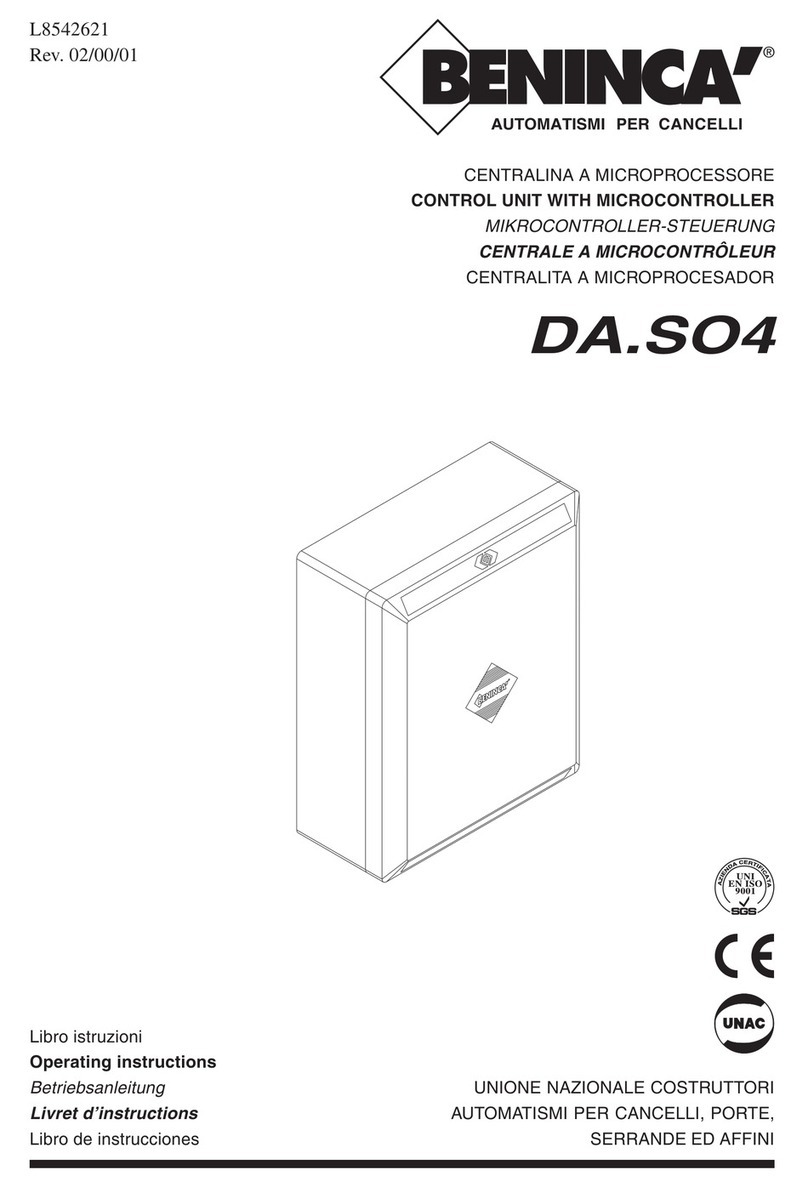
7
DIP 4 “TIMER”- The operating mode of TIMER/II°ch output is selected.
On: Normally Open, free contact. This is controlled by the second radio channel of the built-in
receiver. The switching time is adjustable through the trimmer P1 (timer) from 1 to 200s.
Off: Normally Open, free contact. This is to control service lights, indicator lamps, etc. The
contact switches every time the door moves. The switching time is adjustable through the trimmer
P1 (timer) from 1 to 200s.
STROKE LEARNING
The learning of the stroke (operating time) and of the automatic re-closure time (TCA) is carried out through
the following procedure:
1 - Move DIP2 to ON.
To obtain an automatic re-closure (TCA) move DIP4 to ON.
If the automatic re-closure is not required, move DIP4 to OFF.
2 - Send a Step-by- Step control (through the push-button or the transmitter) and wait that the door is
completely open.
3 - With open door, send a Step-by-Step control:
a) If the DIP4 is to ON, the TCA time counting starts. Wait that the desired TCA time has elapsed, then
send a new Step-by-Step control and the door comes to a closure.
b) If the DIP4 is OFF, a new Step-by-Step control can be sent immediately, and the door comes to a
closure.
4 - The counting of the operating time starts. Wait that the door is completely closed and the movement
comes to a stop, wait some seconds, then send a new Step-by-Step control signal to store the operating
time in memory.
5 - Move DIP2 to OFF again, move DIP 4 to the initial position again.
CONFIGURATION OF THE BUILT-IN RECEIVER
The control unit is tted with a built-in radio module for receiving remote controls both with xed codes
and variable codes (see dip-switch 1 functions), with a frequency of 433.92MHz.
For a transmitter to be used, the module rst has to self-learn its code. The memorise procedure is
illustrated below, the module can memorise up to 14 different codes.
Memorising a new transmitter by activating the P.P. function
- Press the PGM button once for 2sec and the LED DL1 starts ashing rapidly.
- Press the transmitter button within 10 sec to memorise with the P.P. (Step-by-step) function.
After the transmitter has been stored in memory, the receiver exits the programming phase.
To memorise a new transmitter code with activation of 2nd radio channel output (DIP4:ON)
- Press push-button PGM twice, each time for at least 2 seconds, LED DL1 switches on with xed light.
- Within the following 10 seconds, press the transmitter push-button to be memorised with 2nd radio
channel function.
After the transmitter has been stored in memory, the receiver exits the programming phase.
Cancelling all transmitters from the memory
- Cut-off the mains power supply, press the PGM push-button and power the system again, still keeping
the button pressed.
- Keep the PGM button pressed for 5 sec, the LED DL1 switches on with xed light.
- Release the PGM button, the memory is now erased.
N.B.: For safety reasons, transmitters cannot be memorised during the open/close cycles of the motor.
During the memorisation phase of the transmitter codes, if, after pressing the push-button of the
transmitter, DL1 LED lights up with a long ash and then switches off, this means that the receiver is full
(therefore, the code is not stored in memory) or the transmitter used is not compatible.
